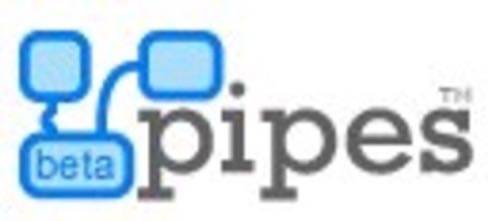Yahoo! Pipes is one of the coolest apps on the web for messing around with data. You can use it to splice together feeds, filter them, pull photos from Flickr and do a whole lot more. Some usability improvements would be nice but a little bit of experimentation goes a long way.

One thing Pipes has not done before today is offer a way to display updated data automatically on another web page. That has finally changed with the release of some javascript badges from the Pipes team. They are nice, but they aren’t really good enough, to be honest.
Three types of badges are now available and at least one is easy to use. That’s the list badge, demonstrated below in displaying the best of the weird hunting blogs, a Pipe we wrote about creating in this post, “How to Find the Weirdest Stuff on the Internet.”
The second badge type is the geotagged photos badge. I’ll be damned if I can filter Flickr by geotag in Pipes, no matter what I put in the the location field it doesn’t work for me. Maybe you’re smarter than me though and will appreciate this feature.
The final badge type is the slideshow badge, again displaying Flickr images.
What’s wrong with these badges?
I display RSS feeds on web pages all the time, I love it. I use a great service called FeedDigest. Unfortunately, since its recent acquisition by a large Russian software company FeedDigest hasn’t been very hospitable to new users. None the less, I use it all the time in important situations. I pay more than a hundred dollars a year for premium capacity there and I pay it happily. Yahoo! Pipes is really useful too – it’s in the same class as Dapper and AideRSS in terms of usefulness, maybe even more useful albeit less easy to use.
For the more code savvy, MagpieRSS on your own server is the way to go. The idea behind these tools, though, is that they let progressively less technical people do progressively more powerful things. It’s in that way that the Pipes team dropped the ball with these badges.
Why are the new Pipes badges suitable only in a pinch, or in inconsequential situations? First, contrary to what Yahoo’s Jeremy Zawodney says in the demo video embedded below, these badges are not particularly customizable at all. They are a single line of javascript with one or two drop downs or fields to define traits like height and width. Perhaps heavier customization could be done with a lot of elbow grease and the Pipes backend, but for all intents and purposes these badges are uncustomizable. App vendors should stop calling skinnable displays “customizable” because a growing class of self-publishers wants much more. That’s the case in the video publishing world and that’s the case here.
Second, the output is via javascript, so it’s invisible to search engines. Other alternatives provide PHP code to add to a page. You can do serious processing with Pipes, so why don’t these badges enable you to finish a serious job?
I would love for Yahoo to provide real customization and search engine visible PHP output. That’s my ambivalent but interested take on this announcement, let’s look at the happy faces of Yahoo! folks showing us how it works.

















